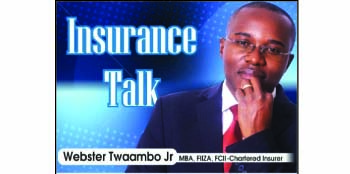 “I WANT insurance which covers everything as far as my motor vehicle is concerned”, remarked a customer. Well, such demands in the industry are not a phenomenon but they need careful responses.
“I WANT insurance which covers everything as far as my motor vehicle is concerned”, remarked a customer. Well, such demands in the industry are not a phenomenon but they need careful responses.
First and foremost, comprehensive insurance is a form of motor insurance that offers the widest possible cover but suffice to say it does not cover everything. It is not an all risks policy which covers all the risks.
Even an ‘all-risks’ policy does not necessarily cover all the risks, it essentially covers everything else apart from those that are excluded.
Therefore the best way to address the conundrum is to explain what the policy covers and with that understanding it becomes easier to help someone appreciate the type of insurance they are looking for.
There are six perils covered under comprehensive insurance policy. These are collision, impact, fire, theft, overturning and third party liabilities.
Collision as the term suggests is where two or more vehicles ram into each other. This may be head on collision or where a negligent driver misjudges clearance distance and hits another motorist.
If a vehicle rams into a building or another property, this is called impact damage. It may also refer to such damage as windscreen damage caused by flying stones or any other damage or loss caused by another object against the vehicle.
Fire damage is where a vehicles is gutted by accidental fire. This is the fire that is not deliberate because any form of fire which the insured deliberately instigates is not covered.
Theft is more straight frward in the same that the vehicle or its parts must be stolen with a view to permanently deprive the owner of the usage. However, theft in insurance is modified from its ordinary meaning through the Theft Act of 1968.
The Act requires that for an incidence to qualify as Theft, there must be forcible entry or exit to the property. The intention of this modification is clear, it prevents unscrupulous people from the easy disappearance of the subject.
If someone for example, leaves the car keys in the ignition and the car is stolen it would not amount to a theft claim in this context ceteris paribus.
Overturning refers to the damage caused by the vehicle flipping with or without involving another vehicle.
Third party liabilities is something that was explained last week in detail. It refers to property damage or injury/death of other third parties or their properties caused by the insured vehicle.
With this lengthy explanation we are now ready to deal with the demand “I want a policy that covers everything”. Such a policy does not exist.
We can further help one understand by explaining what is excluded under this comprehensive insurance.
To begin with it is standard requirement for the policy to be fully paid up prior to the loss or the insured should be on course with their payment plan. This is a condition precedent to liability.
Breach of this payment condition results in no liability on the side of the insurer. The whole essence of insurance is to cover unforeseen losses or the known unknowns in the sense that we know the perils but we do not know when they will occur.
Another exclusion involves deliberate acts which refer to situations where the insured willfully causes loss or damage to the vehicle with the hope of claiming.
Tyres burst exclusion; by their nature tyres are subject to high wear and tear. In an event of a tyre burst, the tyre itself will not be covered but the resultant damage will be covered.
Another exclusion is the pre-accident damage. The same reasons given above, insurance does not cover any loss or damage suffered before effecting insurance.
Someone cannot be involved in an accident then go and take out insurance afterwards to cover such damages. This is why insurers will inspect the vehicle at inception to ascertain the condition of the vehicle so that in an event of a loss the insured will only be compensated up to the condition they were before the loss.
Excess is the uninsured loss. It is standard practice to exclude the first ten percent of the loss in insurance which is borne by the insured so as to make them participate in the claim.
On another note motorists should remember to display an insurance disc which bears the national Coat of arms, Road Transport and Safety (RTSA) and Insurers Association of Zambia (IAZ) logos respectively, including an original stamp of the insurer inter alia.
Comments: webster@picz.co.zm or webster_tj@hotmail.com or on face book search for Insurance Talk-Zambia page or call/text 0977 857 055
[The Author is a Chartered Insurer with more than eleven years industry experience]






